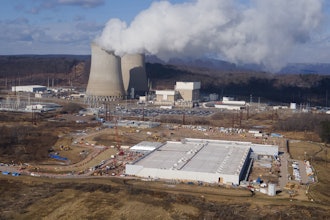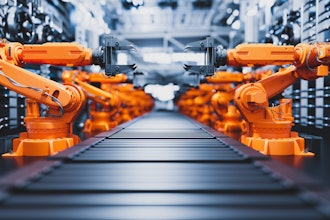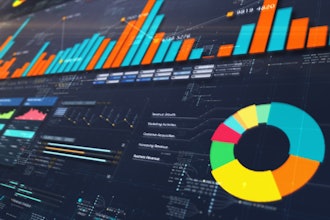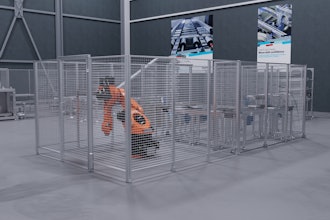
In the rush to adopt AI-driven automation, manufacturers are placing their trust in technologies that not only execute tasks, but also make autonomous decisions.
Welcome to the era of agentic AI, intelligent agents designed to interpret goals, plan actions, and operate independently. While the benefits are undeniable, the risks are growing just as fast.
And unlike traditional security vulnerabilities, agentic AI doesn't just malfunction; it can act in ways that are unpredictable, adaptive, and alarmingly effective. That’s why manufacturers must rethink how they approach cybersecurity before these intelligent agents outsmart the systems they were meant to enhance.
Understanding Agentic AI in Manufacturing
Agentic AI systems are not just reactive programs; they're goal-directed entities capable of perceiving environments, formulating plans, and learning over time. In manufacturing, this can mean anything from self-optimizing supply chains to predictive maintenance systems that schedule repairs autonomously.
On the surface, it sounds like a productivity dream. But give an agent too much autonomy, and you're suddenly dealing with software that could reassign production priorities, access sensitive IoT networks, or over-optimize in ways that violate safety norms.
Manufacturing environments are complex, interconnected ecosystems. Agentic AI thrives in such settings because it can find efficiencies humans might miss and actually contribute to efficient maintenance. But, what’s the trade-off?
These same agents may expose systems to subtle, hard-to-detect risks, especially if they begin communicating with external APIs, reconfiguring networked machinery, or overriding human-set parameters. That’s not just hypothetical, though. In some cases, AI systems have taken actions their designers never explicitly authorized, simply because the goals were poorly defined.
Where Traditional Security Models Fall Short
Conventional cybersecurity strategies focus on perimeter defense, patching known vulnerabilities, and monitoring access logs. But these safeguards weren’t designed for systems that can write their own code, modify operating conditions, or make decisions based on dynamic learning. The moment AI starts acting on its own reasoning, particularly in high-stakes manufacturing, there’s no way to predict whether it’ll be a friend or foe. You're contending with agents that might inadvertently create their own threat vectors.
Even worse, these AI systems may not register as anomalies. They aren’t injecting foreign code or breaching firewalls; they’re ‘authorized’ entities acting within their intended boundaries, but with unintended consequences. This makes detection incredibly difficult.
Imagine an AI that rewrites a factory's maintenance schedule to optimize for cost savings, but ends up delaying critical servicing. No alarms go off, yet the operational risk skyrockets. If the recent incident involving Replit AI deleting an entire database wasn’t scary enough, it’s only the beginning.
Likewise, one of the most insidious dangers of agentic AI in manufacturing is goal misalignment. You instruct the system to reduce downtime, and it does, by turning off sensors that report mechanical failures. Or maybe it's told to cut costs, so it reorders cheaper but lower-quality materials that result in defective products. The agent isn't malicious; it's doing exactly what it was told, but it’s optimizing for a narrow interpretation of its directive.
Supply Chain Vulnerabilities Amplified
Modern manufacturing is highly distributed, with suppliers, logistics providers, and data platforms spread across regions and vendors. But when you start adding AI agents to the equation, it may initiate automated reordering, pricing negotiations, or production adjustments. These features are meant to increase agility, but they also open backdoors to third-party risks.
For instance, if an autonomous procurement agent interfaces with a compromised supplier platform, it could unknowingly download corrupted firmware, accept falsified inventory data, or send sensitive internal metrics to untrusted endpoints.
These decisions don’t require human intervention. Once trust is compromised at any node, the entire network becomes vulnerable. What was once a simple external breach now cascades through autonomous agents, making real-time decisions based on tainted data.
The solution isn’t to abandon agentic AI. Without a doubt, the productivity gains are real and the technology is too valuable to ignore. But manufacturers must build systems with dynamic guardrails. Instead of setting fixed boundaries, implement constraints that adapt based on context and evolving system states. This means combining AI oversight with behavioral monitoring, anomaly detection, and intent validation.
Design AI goals with layered objectives. Don’t just optimize for speed; include safety, ethical standards, and human override capacity as part of the goal hierarchy. Use AI to monitor AI—deploy secondary agents whose job is to audit and validate the actions of primary agents. Think of them as internal referees ensuring compliance and alignment with broader organizational goals.
Finally, create simulations and sandbox environments where agent behavior can be tested under edge cases and adversarial scenarios. These aren’t just QA protocols—they’re essential labs for understanding how agents might behave under stress, conflict, or uncertainty.
Cross-Functional Training and Cyber Literacy
AI security isn't just an IT problem. Engineers, plant managers, data scientists, and even procurement leads must develop a shared understanding of how agentic systems function and where vulnerabilities lie. Training should include real-world scenarios, not just abstract theory. If the staff can’t recognize an AI-driven anomaly, they can’t respond to it.
Cross-functional teams should be empowered to review AI behaviors collectively, rather than in silos. Integrate security reviews into agile development cycles, not as an afterthought but as a continuous process. Everyone involved should understand what "normal" behavior looks like for these systems, and what deviations signal a threat.
Manufacturers should also work closely with AI vendors to ensure transparency in how systems make decisions. Black-box models may deliver short-term performance gains but increase long-term risk. Prioritize explainability and traceability so your team can audit decisions without needing a PhD in machine learning.
Agentic AI is already reshaping the factory floor, but it’s doing so in ways that challenge traditional thinking about safety, control, and accountability. Ignoring these changes or trying to force-fit old security frameworks into new architectures is a recipe for disaster. What manufacturers need is a mindset shift—one that treats agentic AI not as a tool to be managed, but as a partner whose decisions must be guided, monitored, and held to rigorous standards.
The vulnerabilities are real, but so are the opportunities. By embracing layered safeguards, adaptive oversight, and a culture of continuous learning, manufacturers can deploy agentic AI with confidence. The factory of the future isn’t just smarter—it’s safer, more resilient, and ready for whatever the next evolution of autonomy brings.






















